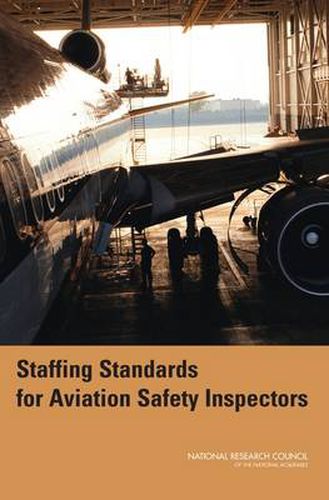Readings Newsletter
Become a Readings Member to make your shopping experience even easier.
Sign in or sign up for free!
You’re not far away from qualifying for FREE standard shipping within Australia
You’ve qualified for FREE standard shipping within Australia
The cart is loading…






A primary mission of the Federal Aviation Administration (FAA) is the assurance of safety in civil aviation, both private and commercial. To accomplish this mission, the FAA has promulgated a large number of regulations and has established a major division, the Office of Aviation Safety, to enforce and maintain the regulations and effectively promote safety in aviation. Within the office there are several subordinate organizations.
Staffing Standards for Aviation Safety Inspectors is concerned with two of them: the Flight Standards Service (called AFS), charged with overseeing aviation operations and maintenance, as well as other programs, and the Aircraft Certification Service (AIR), charged with ensuring the safety of aircraft through regulation and oversight of their design and manufacture. The objective of the study is to determine the strengths and weaknesses of the methods and models that the FAA now uses in developing staffing standards and projections of staffing needs for ASIs and to advise the FAA on potential improvements.
Staffing Standards for Aviation Safety Inspectors is organized in an Executive Summary and five chapters. This first chapter provides the background of the study and explains the committee’s approach to its task. Chapter 2 discusses modeling and its applicability to the development of staffing standards for such organizations as the Flight Standards Service and the Aircraft Certification Service. Chapter 3 traces the recent history of staffing standards in these organizations and considers manpower and staffing models and methods used by other organizations. Chapter 4 examines factors to be considered in the development of ASI staffing standards and the challenges faced by any methodology applied to this task. Chapter 5 presents the committee’s findings and recommendations, including a discussion of issues and constraints that must be considered in weighing the implementation of alternative approaches.
$9.00 standard shipping within Australia
FREE standard shipping within Australia for orders over $100.00
Express & International shipping calculated at checkout
Stock availability can be subject to change without notice. We recommend calling the shop or contacting our online team to check availability of low stock items. Please see our Shopping Online page for more details.
A primary mission of the Federal Aviation Administration (FAA) is the assurance of safety in civil aviation, both private and commercial. To accomplish this mission, the FAA has promulgated a large number of regulations and has established a major division, the Office of Aviation Safety, to enforce and maintain the regulations and effectively promote safety in aviation. Within the office there are several subordinate organizations.
Staffing Standards for Aviation Safety Inspectors is concerned with two of them: the Flight Standards Service (called AFS), charged with overseeing aviation operations and maintenance, as well as other programs, and the Aircraft Certification Service (AIR), charged with ensuring the safety of aircraft through regulation and oversight of their design and manufacture. The objective of the study is to determine the strengths and weaknesses of the methods and models that the FAA now uses in developing staffing standards and projections of staffing needs for ASIs and to advise the FAA on potential improvements.
Staffing Standards for Aviation Safety Inspectors is organized in an Executive Summary and five chapters. This first chapter provides the background of the study and explains the committee’s approach to its task. Chapter 2 discusses modeling and its applicability to the development of staffing standards for such organizations as the Flight Standards Service and the Aircraft Certification Service. Chapter 3 traces the recent history of staffing standards in these organizations and considers manpower and staffing models and methods used by other organizations. Chapter 4 examines factors to be considered in the development of ASI staffing standards and the challenges faced by any methodology applied to this task. Chapter 5 presents the committee’s findings and recommendations, including a discussion of issues and constraints that must be considered in weighing the implementation of alternative approaches.